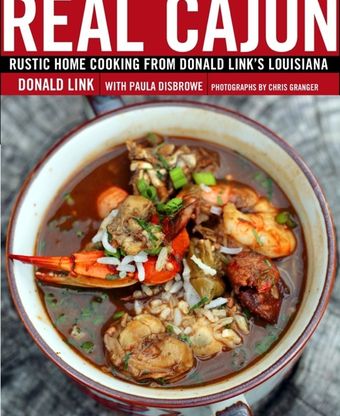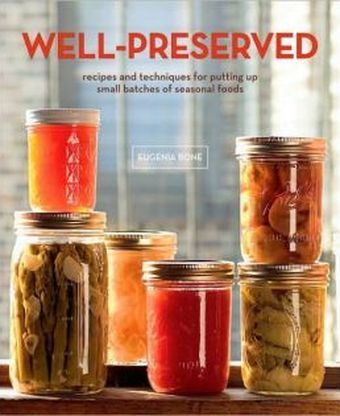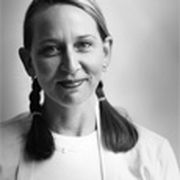What I've eaten over the years called "Cajun Food," I've liked pretty much, but to me it's like Mexican food: once a decade will do, and only while on vacation, buzzed enough on tequila that you find yourself thinking that you might actually buy the giant sombrero; what fun, you think, while dozing in your hammock, burping up cilantro.
Gumbo sounds good, too, when you've got your sazerac in a "go" cup and you're mosey-ing from stage to stage at Jazz Fest. But that mostly mushy, always salty food -- with its tireless iteration of green bell pepper, ground white pepper and hot sauce, never appeals to me to want to cook. Oh bummer, I thought, when Donald Link's Real Cajun (written with Paula Disbrowe, who, full disclosure, was the Monday night bartender at Prune for a few months many years ago) showed up on my desk as part of the tournament.
And then, when the contender arrived, Eugenia Bone's Well-Preserved: recipes and techniques for putting up small batches of seasonal foods, I thought, does somebody at food52 dislike me?, and sat dejectedly at my desk. I want to can tomatoes, pickle green beans and make strawberry preserves about as often as I want to don a bonnet and dip wax candles.
But let's start with the gumbo. Donald Link has a recipe for a seafood version that has as its first ingredient, "at least 6 cold beers for the chef." This, of course, makes me really like the guy. He says it's the dish that made him want to become a chef. So I cooked it.
The Gumbo, in total, took me a little over six hours to cook, in straight uninterrupted time. I "cheated" and enlisted one of my line cooks to prepare the mise en place -- so I didn't even shop for, measure, or dice the ingredients myself. In other words, the six hours I spent didn't include shopping, measuring or peeling any onions. But I believe in elaborate, involved projects sometimes. I am -- even as a full-time working mother of two small children -- against this recent urge toward convenience for the home cook, and the dumbing down of the home kitchen, where everything needs to be done in 15 minutes, with only 3 ingredients, two of them store-bought.
The roux itself took well over an hour of constant stirring and everyone who passed through the kitchen commented on the aroma, which changed every 15 minutes from the smell of baking bread, to the smell of cornflakes, to just-fried chicken, to the smell eventually, of dark toast. It was truly a revelation -- I had never cooked and probably never eaten such a dark roux. The heat from the poblano and the jalapeno's and the mixture of white and black peppers as well as gumbo file powder, the deep flavor of the seafood stock in which the fat from the crab bodies is reserved and used, made the stew so deep and round and full and complex, and I lovingly admit, totally crave-able.
I brought two quarts of the seafood gumbo with me on a long train ride to the Adirondacks the following morning and for lunch, I asked the conductor in the café car if he'd mind heating them up in his microwave. "Smells like Gumbo," he said matter-of-factly. And our ensuing conversation revealed he was from Metairie and had left, in 2005, after "the storm." I shared a pint of the stuff with him - packed with oysters, crab meat, and shrimp - and when I saw him on the return trip a day later, he said he wished he'd had the gall to ask for a little bit more, it so reminded him of home!
Eugenia Bone's well-known father, Ed Giobbi, put up all manner of foods when she was growing up and she was accustomed to his tinkerings with tomatoes, prosciutti, lonza -- the cured smoked pork loin -- and, amazingly, a two-hundred pound tuna which, she writes, he'd "bought off the pier and gutted there, chucking the churn into the bay among the screeching gulls. Dad flopped the big silver fish, round as a barrel, into the only bathtub in the house, where he salted it and soaked it in cold running water. For two days the fish bled in the tub. It was fascinating, but in my self-conscious pubescence I found it intimidating to use the toilet with that big fish so close, its round eye staring glassily at the showerhead."
I could see immediately that this would be no chaste, pleasureless book offering the kinds of canning tips exchanged at a quilting bee. Sure enough, a page earlier in her preface, she writes of being introduced to an exceptional gravlax by an avuncular writer friend at a swanky brunch he throws at his uptown apartment. Bone returns to her tiny Greenwich Village walk-up with the guy's "twenty-something son in tow, where we smoked a joint. While I rhapsodized about cured fish, imagining my own brilliant brunches, he swooned and fell off the edge of my platform bed."
I didn't try her techniques for curing tuna or for curing salmon. I've already got my own and I love them better than anyone else's. I started rather, with one of the several Master Recipes she offers in the book -- one preserve used in a multitude of recipes which she provides in an effort to show you how versatile the thing can be. In this case -- the Foriana Sauce -- I, too, might have swooned and fallen off the bed if she had been inclined to lure me home and feed me some. This full three pints of incredibleness took me less time to make, from start to finish, than it took me to even read through the gumbo recipe I'd made the day before. It's a recipe of her father's, and it comes from the island of Ischia off the coast of Naples. It is hauntingly, crave-ably delicious. I mean, dee-lish-usss. For only about five minutes you stir and stir a kind of pulce of ground pine nuts, walnuts, golden raisins, garlic and dried oregano, "resembling wet granola," she writes, until the nuts have become golden and toasty, the raisins have released their sugars a bit and even crystallized slightly, and the dried oregano releases its perfume, while the bite of the garlic softens. I used it every way she suggested -- on bruschetta, on long cut pasta, and the most exquisite -- on 1/2 shell little neck clams that I shucked, topped with the sauce and a few bread crumbs and then broiled. You could buy the book for this recipe alone and have your money's worth.
Both Link and Bone had recipes and techniques for bacon so I made both of them. Link uses a ton of salt, a ton of sugar, and the slab of belly, cut into one pound tablets, took up a full shelf in my fridge, or would have if I'd cured it at home in my domestic kitchen. Bone's, by fascinating contrast, so elegant and truly Italian in its economy, simplicity and less-is-more ethic -- used barely a handful of spice rub mixture (merely 3 tablespoons of curing salt mixed with some garlic and pepper and fennel seeds, essentially) -- and that mixture, which fit in the palm of my hand, created a subtle, finessed and captivating cure for the bacon and could have fit -- all two and a half pounds of it -- rolled up into my 5-year old's brown paper lunch bag.
But I also made her pickled asparagus, omitting the "optional" ingredients (allspice, cumin and coriander) as I have never understood a recipe that has them -- either the dish needs something or it doesn't -- and it resulted in a boring pickle, especially considering the wide and delicious variety of what's available now, from Rick's Picks in New York to the goods from Boat Street in Seattle, which one can buy at the store.
A cookbook is still a book, in my game, and the writing matters. Bone can do in one muscular sentence, sometimes even with one word -- what it takes Link and Disbrowe together entire, uncomfortably sentimental chapters to accomplish. Even in her acknowledgments page, I chuckled out loud when Bone thanks one of her teachers "whose shoulders only drooped a tiny bit when I raised my hand..." Bone is probably the better writer, but beyond her wicked, delicious intro she stops writing much other than brief recipe head notes, and but for a few salty words tossed in to those head notes here and there, her good writing does not make much of a reappearance. It evaporates.
In the side bar to the aforementioned gumbo recipe, called "reflections on making a roux," Link writes that the hour it takes, constantly stirring, for the flour to turn the color of a dark penny is plenty of time to be "alone with your thoughts." Remember, this is the guy who drank a beer for breakfast that morning, and who later refers fondly to a Cajun 7-course meal as "a pound of Boudin and a six-pack of beer." This type of Hallmark card sentiment -- Contemporary-Hallmark, I mean, where the "gritty" or "unvarnished" parts of life are no longer omitted, but now come heavily-oaked and with a vanilla top-note -- is laid on so thick throughout the book, that at one point, when he refers to "the cycle of life" I groaned out loud. I have no idea how two people write one book but someone -- either Link or Disbrowe or both -- has got Link drinking beer and getting in touch with his emotions every other page, whenever a pot needs stirring.
I have some pet peeves in food writing, and both writers stumbled across them. Which is neither here nor there -- it's not up to the cookbook writer to know about or give a shit about my particular pet peeves in food writing -- but if you're like me at all and you cringe when you hear the word "sexy" used to describe a dish, an ingredient or a menu -- you will be doing so on at least three separate occasions in Eugenia Bone's book. Someone, anyone, tell me what's sexy about bottarga. For that matter, what's "cozy" about something to eat, even if it's gingerbread cake. And I will need some pointers, as well, on how to feel comfortable, as a 43-year-old woman, having a whole line of wines described to me, in 3-year-old talk, as "yummy!" I blanch whenever a recipe instructs me to "dump" or "just throw" the contents of a jar, bag or box into a pan. "Dump" is what trucks do. It's also a word that recipe writers who want to emphasize how "folksy" they are and how easy to prepare their recipes are, use too often.
I had to thumb through Eugenia Bone's book a little too long to find four things I really wanted to cook, mostly because I am not a fan at all of fruit in my savory food and too many of the duck and pork and chicken recipes call for brandied figs, preserved cherries or spiced apples or pears in port wine. Not my bag.
Of the many savory items that don't call for sweet syrupy fruits, it was a bit of a struggle, for me at least, to find something I felt excited to cook, only because I am not any longer turned on, like I was in the 80's, by Smoked Chicken Breast and Wild Rice and even less so, assuredly, by Farfalle Alfredo with Gravlax. Even old classic favorites, like Tuna and Warm Potato Salad, or Quesadillas, or Chicken and Sausage with Marinated Red Bell Peppers failed to inspire me to get out the pressure canner, sterilize the ball jars, fire up the smoker and read through the extremely detailed, thorough, technical writing of the not short chapter on preserving techniques, which includes information about pH levels in different foods, and at different altitudes, no less. That is a lot of work and equipment, even for me with a full restaurant kitchen and staff at my disposal, to dedicate to a dish as banal and retro as Baked Brie with Concord Grape Walnut Conserve. Maybe twenty years ago when I was still smoking pot. Avid preservers from the Rockies to the Florida Keys will want this book in their kitchen library, because the techniques are so well-researched and explained, but cooks looking for interesting ideas for dinner will have to think hard if they want that precious bookshelf real estate dedicated to it.
To me it made sense to make Link's Boudin, a classic, but also because of his declaration that "Boudin, the king of Cajun food, is my favorite thing in the world to eat." After making his recipe, it's also now one of mine. Its balance of liver and rice and pork shoulder is just right, but more importantly, in this recipe and his others Link slamdunks with his expert control of spice, and salt, and also shows that he has truly tested his recipes to end up in a very specific place. This is no -- add a dash of this and a dash of that -- kind of willy-nilly recipe writing, with optional ingredients. His recipes are exacting; follow them to the letter and you will be eating exquisite, revelatory Cajun Food. It will be a little later at night than you hoped, you'll have made your way through a cold six-pack, but as they say in Cajun Country, you will "Pass a good time!"
Link wins.



19 Comments
Such a thoughtful, well-written review, with a dash of humor thrown in. Oops, pet peeve alert!
I agree with Amanda and am wondering as well about consecutive generations of cookbook writers.